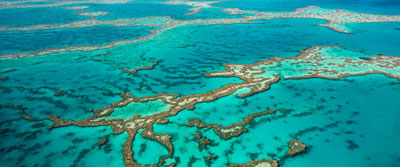Although many scientists are concerned about coral reefs being doomed, there’s a bit of good news on this front.
A rash of factors are negatively affecting the world’s reefs, but pollution from agricultural fertilizers and sewage runoff seems to be one that reefs can bounce back from.
Elevated levels of nitrogen and phosphorous cause coral disease and bleaching, but a three-year study in the Florida Keys shows that when pollution stops, the reefs rebound in a surprisingly short time.
In just 10 months, the reefs recovered!
The study, published in Global Change Biology, is the first to pin down the impact of nutrient overloads and separate them from other causes of reef decline, such as warming waters from climate change.
With regular injections of nutrients at study sites, levels of coral disease and bleaching surged. Within a year of those injections being stopped, the reefs returned to their previous levels.
“A combination of increased stress and a higher level of pathogens is probably the mechanism that affects coral health,” says Rebecca Vega-Thurber, assistant professor at Oregon State University’s College of Science.
“What’s exciting about this research is the clear experimental evidence that stopping pollution can lead to coral recovery. A lot of people have been hoping for some news like this.
“Some of the corals left in the world are actually among the species that are most hardy. The others are already dead. We’re desperately trying to save what’s left, and cleaning up the water may be one mechanism that has the most promise,” she says.
Unlike global warming, nutrient loading can be more easily addressed by improved sewage treatment and best-management practices that minimize fertilizer runoff.
Meanwhile, in Australia
Unbenownst to most people, last week was the annual "Greatest Sex Show on Earth, when the coral in Australia’s Great Barrier Reef spawn under the full moon (it’s spring there now). The coral releases so many sperm and eggs that when they float to the water’s surface they can be seen from space – as vast areas of the Pacific Ocean turn red.

As they did last year in Hawaii, scientists took this opportunity to capture billions of sperms and eggs which they will freeze cryogenically in the world’s biggest sperm bank. Some will be preserved for hundreds and possibly thousands of years in the hope of someday replenishing reefs.
Some will be used for research on improving coral’s resilience and ability to adapt to changing conditions, and others will be used in a grand experiment to artificially inseminate existing reefs, growing new coral. Scientists from Scotland are testing robotics technology that can repair damaged corals.
A nursery at Australia’s Marine Science Institute is being created to rear baby corals and to test ways of reintroducing them to the reef, reports The Independent. They hope to grow reefs "in-vitro" and then seed wild reefs.
"We know the Great Barrier Reef is in deep, deep trouble. “We will never have as much genetic diversity again on the reef as we do right now. This is our last opportunity to save as much as we possibly can,” researcher Rebecca Spindler, who heads one of the sperm banks, told The Independent.
They are addressing the biggest threat to the world’s reefs – acidification. Coral is actually fairly adaptive over time. It can survive prolonged heat, but higher acid levels in oceans are reducing their ability to tolerate the heat. Fish are moving to colder waters, reducing the biodiverse web corals rely on.
Scientists expect reefs in the West Indies and the Caribbean to be gone by 2020 and while nearly half the coral is gone in the Great Barrier Reef, it could last a few more decades.
Scientists believe that a bank of warm water stretching across the Indian Ocean, the Maldives and the Seychelles is the chief villain in this narrative. "American satellite systems picked up a wall of water two or three degrees warmer than usual sitting across much of the coral reef area of the world causing heat stress. So what we have seen is stress right across the tropical band," Dr. Jamie Oliver of the Great Barrier Reef Marine Authority, told BBC.
Last year, he says, is thought to have been the warmest in terms of sea temperature for 400 years. Meanwhile, the increasingly acidic seawater makes it more difficult for corals to build their calcium carbonate skeletons. Other threats unfortunately are numerous, from overfishing and invasive species to deforestation, which smothers corals as soil erodes in the water.
And sadly, the Australian government just put another nail in the coffin by approving one of the world’s largest coal ports this week. The Minister of the Environment, no less, signed off on dredging three million cubic meters from the seabed to build the port and all that sediment will be dumped in the reef’s waters. He also approved plans for a liquified natural gas plant, which also requires dredging.
“Scientists are telling us pollution is killing the Reef, that it needs extra care, but this decision treats the Reef like a dump," says Richard Leck, Climate Change Strategy Leader for World Wildlife Fund Australia.
Read our article, "Too Late to Save Most Coral Reefs?"
Take a look at Google’s Street View of the world’s six most important coral reefs:
